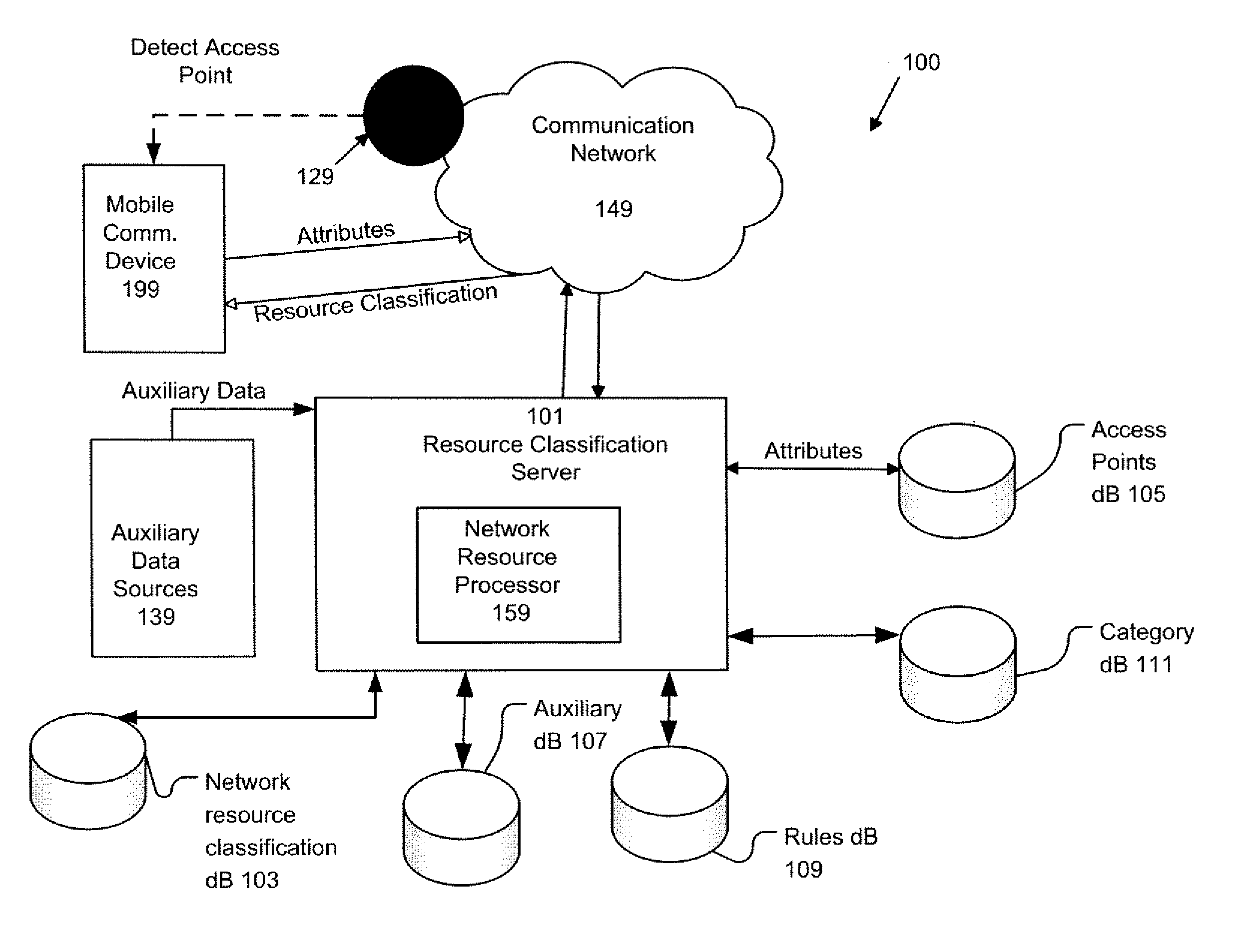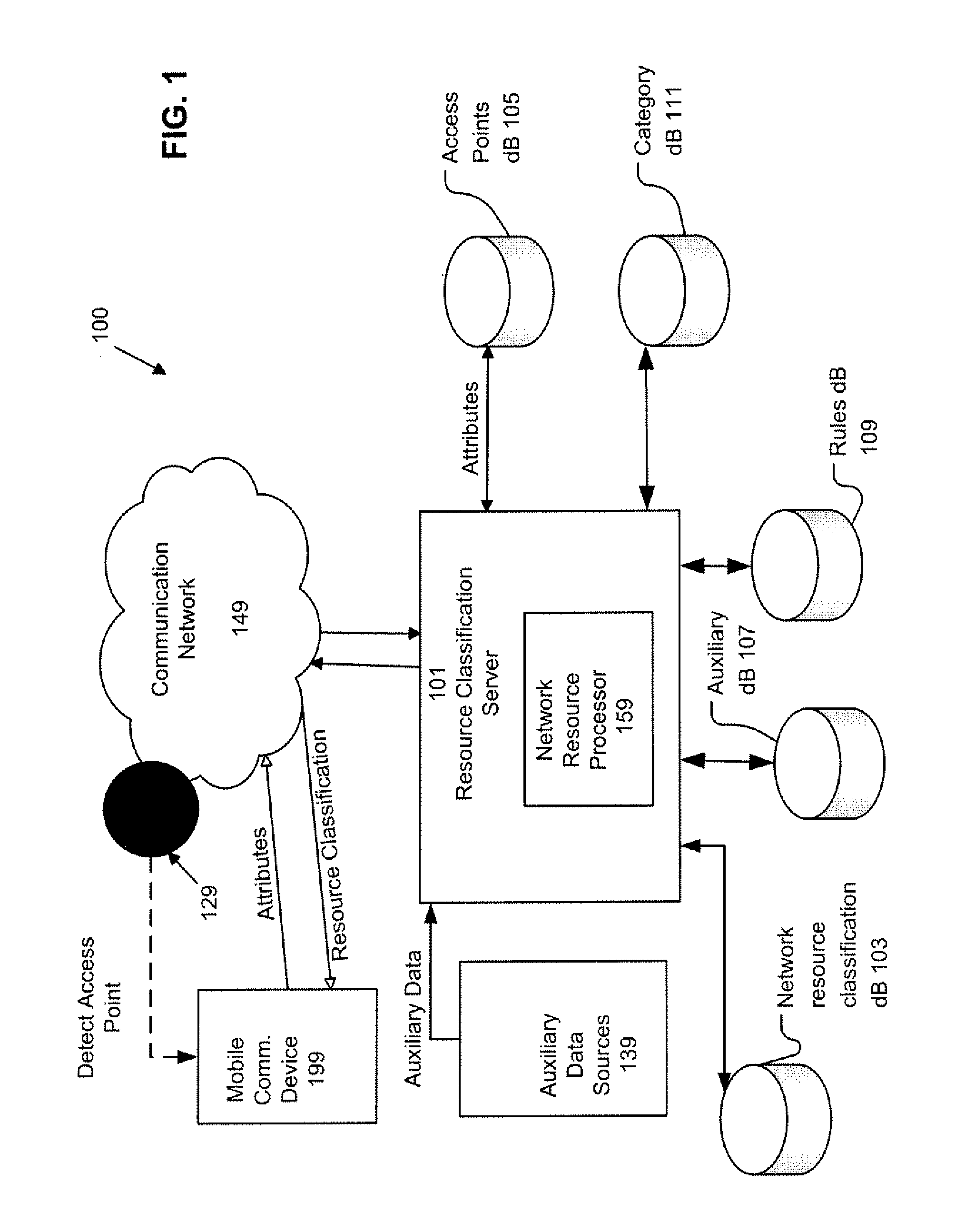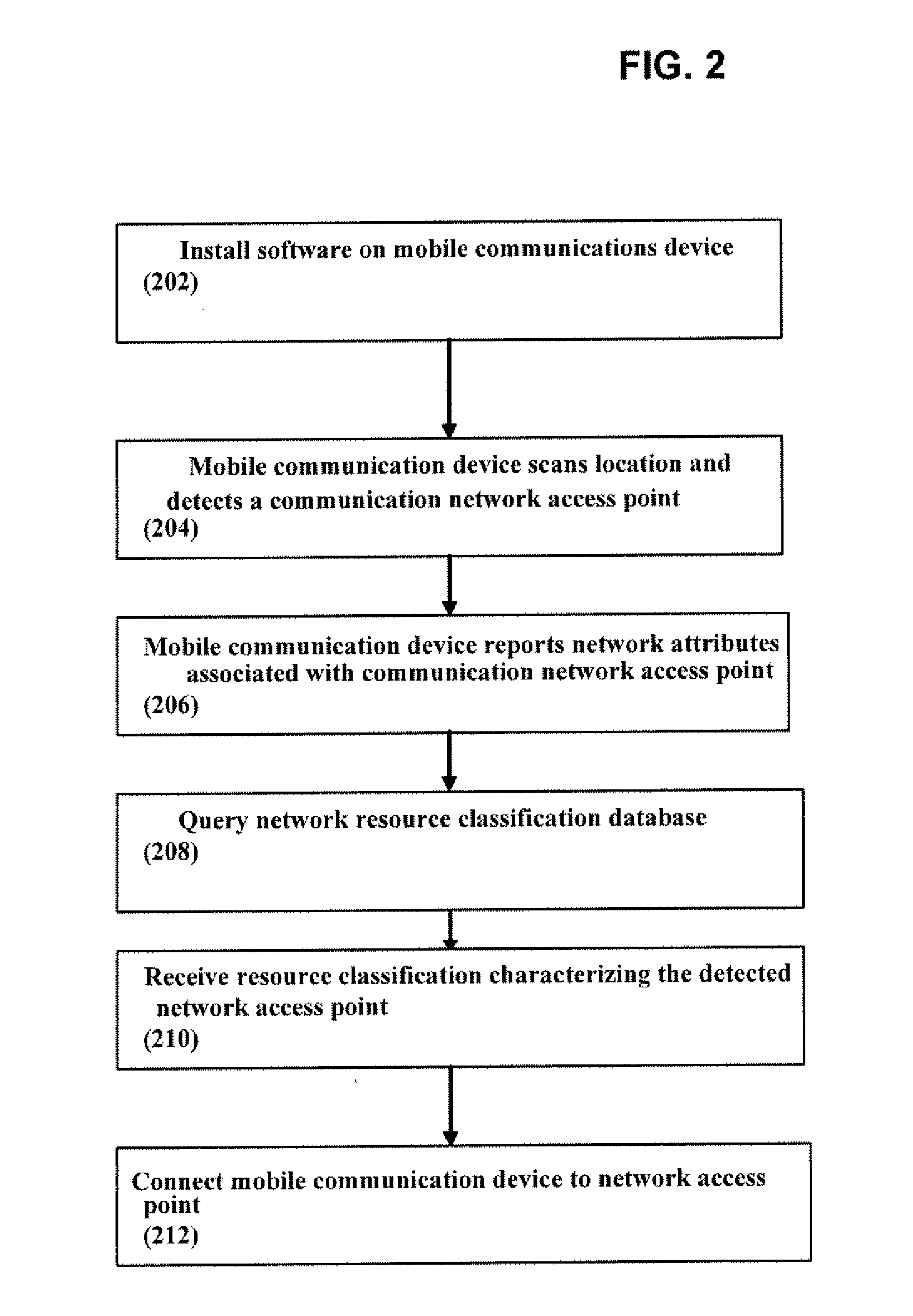System and Method of Automatically Connecting A Mobile Communication Device to A Network using A Communications Resource Database
a mobile communication device and database technology, applied in the field of mobile communication devices and communications networks, can solve the problems of inconvenient deployment and management of wi-fi equipment, inability to detect collisions, and high cost of traditional high-density cellular network deploymen
- Summary
- Abstract
- Description
- Claims
- Application Information
AI Technical Summary
Benefits of technology
Problems solved by technology
Method used
Image
Examples
Embodiment Construction
The following detailed description of the invention refers to the accompanying drawings and to certain preferred embodiments, but the detailed description does not limit the invention. The scope of the invention is defined by the appended claims and equivalents as it will be apparent to those of skill in the art that various features, variations, and modifications can be included or excluded based upon the requirements of a particular use.
The present invention provides a system, method, and computer program product for automatically connecting a mobile communication device to a network using a resource classification database. The system, method, and computer program product classifies wireless network resources by creating and maintaining the resource classification database. Network attributes associated with a detected network access point are received at a resource classification server. The received network attributes are stored in an access points database and analyzed. Auxili...
PUM
 Login to View More
Login to View More Abstract
Description
Claims
Application Information
 Login to View More
Login to View More - R&D
- Intellectual Property
- Life Sciences
- Materials
- Tech Scout
- Unparalleled Data Quality
- Higher Quality Content
- 60% Fewer Hallucinations
Browse by: Latest US Patents, China's latest patents, Technical Efficacy Thesaurus, Application Domain, Technology Topic, Popular Technical Reports.
© 2025 PatSnap. All rights reserved.Legal|Privacy policy|Modern Slavery Act Transparency Statement|Sitemap|About US| Contact US: help@patsnap.com



